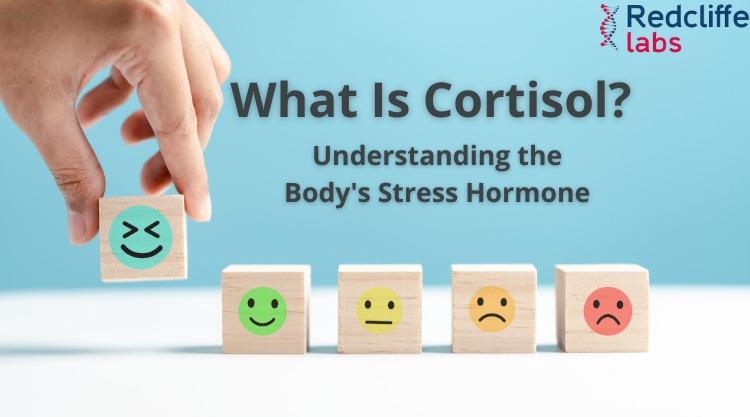Pain in the Back of the Head: Causes, Symptoms, & Treatment

Medically Reviewed By
Dr Divya Rohra
Written By Kirti Saxena
on Apr 9, 2025
Last Edit Made By Kirti Saxena
on Jul 19, 2025

Do you sometimes feel pain in the back of your head? Is this frequent?
If this is persistent and regular, then it might be a cause for worry. There can be several causes of pain in the back of the head, including tension, migraine, and medication overuse. In this article, let's understand the common causes of pain in the back of the head, including the symptoms, possible treatments, and prevention methods.
Types of Headaches That May Cause Pain in the Back of the Head
Here are some common causes of pain in the back of the head:-
1. Tension-Type Headaches
Tension-type headaches are the most common type and may be caused by stress, anxiety, or muscle tension. They may also cause neck, shoulder, or scalp discomfort that lasts up to seven days.
Symptoms:
- Pressure or tightness around the head
- Mild to moderate pain
- Nausea or sensitivity to light/sound
Treatment:
- Stress management
- Pain relievers (ibuprofen, acetaminophen)
- Regular exercise and relaxation techniques
2. Migraine
Migraines are severe headaches that may cause throbbing pain and can occur in any location of your head. They can affect one side or both sides of the head.
The healthcare professional may recommend pain relievers to lower the pain. The migraine can be mild to severe. However, your healthcare professional will help you find out the triggers of your migraine attacks so that you can avoid these stimuli.
Symptoms:
- Intense throbbing pain
- Nausea and vomiting
- Sensitivity to light and sound
Triggers:
- Hormonal changes
- Certain foods (chocolate, caffeine, processed foods)
- Stress and lack of sleep
Treatment:
- Prescription medications (triptans, ergotamines)
- Lifestyle modifications
- Avoiding triggers
3. Cervicogenic Headache
A cervicogenic headache originates from issues in the neck, such as arthritis, nerve compression, or muscle strain.
Herniated discs in your cervical spine can cause pain and tension in this area. This headache is called a cervicogenic headache.
The pain originates in the back of the head. The pain may intensify when you’re lying down.
Symptoms:
- Pain in the neck that spreads to the back of the head
- Stiff neck
- Discomfort in the shoulders or upper arms.
- Pain worsens with neck movement.
Treatment:
- Physical therapy
- Chiropractic care
- Pain relievers and muscle relaxants
4. Occipital Neuralgia
Occipital neuralgia is a condition that causes inflammation in the nerves that run from your spinal cord to your scalp. It is often found in people with migraines.
Symptoms of pain:
- Sharp, stabbing pain in the back of the head
- Sensitivity to light
- Pain and pressure behind your eyes
- Tender scalp
- Pain that spreads to the sides of the head
Treatment:
- Nerve blocks or injections
- Anti-inflammatory medications
- Heat therapy and massage
5. Cluster Headache
Cluster headaches are rare but extremely painful headaches that occur in clusters over weeks or months. They may cause pain in the back or sides of the head and worsen while lying down.
Symptoms:
- Severe pain behind one eye
- Nausea
- Restlessness
- Sharp, penetrating, and burning pain
- Tearing and redness of the affected eye
- Sensitivity to light and sound
- Runny nose and facial sweating
Treatment:
- Oxygen therapy
- Triptans
- Preventive medications
6. Medication-Overuse Headache
Overusing medications and painkillers for headaches can cause rebound headaches, which affect the back of the head.
Symptoms:
- Frequent headaches
- Worsening pain despite taking medication
Other issues-
- Lack of energy
- Physical weakness
- Restlessness
- Sleepiness
- Nausea
- Anxiety
- Irritability
- Difficulty concentrating
- Depression
Treatment:
- Gradual withdrawal from overused medications
- Alternative pain management techniques
- Consultation with a doctor
7. Poor Posture
Slouching or sitting in a poor position may strain the neck muscles, leading to back and head pain.
Poor posture may also cause pain in the back of the head and neck. Your body position may also create back, shoulder, and neck tension.
Symptoms:
- Dull, aching pain
- Neck stiffness
- Pain worsens with prolonged sitting
Treatment:
- Correcting posture
- Ergonomic furniture
- Stretching and strengthening exercises
8. Low-Pressure Headache
A low-pressure headache, or positional headache, is a pain in the back of the head. It occurs when cerebrospinal fluid levels drop due to a spinal fluid leak, often after a lumbar puncture or spontaneous leak. The headache worsens while sitting or standing. Coughing, bending, sneezing, lifting, and straining can also trigger it.
Symptoms:
- Nausea
- Dizziness
Treatment:
- Fluids and caffeine
- Bed rest
- Blood patch procedure (if needed)
Should You Be Concerned About Pain in the Back of Your Head?
Most headaches are not serious. However, if you experience:
- Sudden, severe headache (thunderclap headache)
- Vision changes
- Weakness or numbness in limbs
- Confusion or trouble speaking
- Headache after injury: Seek immediate medical attention.
Symptoms That Accompany Back Head Pain
Here are some common symptoms of pain in the back of the head-
- Neck stiffness
- Nausea or vomiting
- Sensitivity to light or sound
- Dizziness
- Difficulty concentrating
How Does Poor Posture Cause Pain in the Back of the Head?
Poor posture puts extra stress on neck muscles and causes:
- Muscle tightness and inflammation
- Reduced blood flow to the brain
- Pinched nerves causing radiating pain
Tips to Improve Posture:
- Keep screens at eye level
- Use ergonomic chairs
- Stretch and move regularly
When to See a Doctor?
If you experience unusual or different pain symptoms in the back of your head, consult your doctor.
Consult your doctor if you experience:
- Constant or worsening pain
- Pain for more than a few days
- Headache troubling your usual activities
- Do you notice any changes in headache patterns
- New or different headache patterns
- Confusion
- Weakness
- Fever
- Vision loss
Your doctor may recommend several diagnostic tests to diagnose the cause of your headache. They may advise getting your CBC, thyroid function test, urine analysis, and more. You can get these tests done from Redcliffe Labs at highly cost-friendly prices.
Managing back pain at home involves self-care techniques, lifestyle modifications, and natural remedies. Here are some effective ways to relieve pain:
How Can You Manage Back Head Pain at Home?
There are several tips to manage pain in the back of the head-
- Apply Hot or Cold Compress- An ice pack helps to lower the inflammation and numb the pain. You can apply an ice pack wrapped in a cloth for 15-20 minutes. A hot compress helps to relax tense muscles. Use a warm towel to relieve the pain.
- Improve Your Posture—Maintain a straight posture while sitting and standing. This prevents strain on the neck and back.
- Perform Gentle Neck Stretches—To relieve tension, do neck exercises such as tilting your head forward, backward, and side to side.
- Stay Hydrated- Dehydration can trigger headaches. To keep your body hydrated, drink at least 8-10 glasses of water daily.
- Get Proper Sleep—Not getting enough sleep can also trigger tension headaches. Use a good-quality pillow and sleep in a comfortable position. Aim for 7-9 hours of sleep every night.
- Limit Screen Time- Reduce screen time, which may cause eye strain and tension headaches.
- Identify headache Triggers- Keep a headache diary to track what causes your pain (e.g., dehydration, stress, poor sleep, or certain foods).
The Final Words
Various factors, including tension headaches, migraines, and poor posture, may cause pain in the back of the head. If you notice any unusual symptoms of headaches, you should consult your doctor. To reduce pain symptoms in the back of the head, always follow good posture, manage stress, and seek timely medical attention to prevent complications.
FAQs
1. Can dehydration cause pain in the back of the head?
Yes, dehydration may cause headaches, including pain in the back of the head.
2. Does exercise help with back head pain?
Yes, regular physical activity helps to reduce stress and muscle tension.
3. Can sleep affect head pain?
Yes, your poor sleep posture can also cause headaches.
4. What are some common causes of pain in the back of the head?
Tension, poor posture, migraines, stress, and dehydration are some common causes of headaches.
5. What are the symptoms of occipital neuralgia?
Occipital neuralgia causes sharp, stabbing pain in the back of the head. It can also lead to scalp tenderness and throbbing pain.
6. Can migraines cause back head pain?
Yes, migraines can cause pain in the back of the head. This pain may be throbbing and can be felt on one or both sides of the head, including the back.
7. How can you relieve a headache in the back of the head?
To relieve a headache in the back of your head, try applying a cold compress, taking over-the-counter pain relievers, using relaxation techniques, and ensuring good posture and hydration.
What causes short, sharp pains in the head?
Short, sharp pains in the head can be caused by conditions like migraines, cluster headaches, or occipital neuralgia, but they can also be related to nerve irritation or injury.



